Does cleaning your air rifle's barrel improve accuracy, or is it a myth? Gary Wain shoots thousands of pellets in his quest to find out!
"To clean or not to clean? THAT is the question"
If Shakespeare’s Hamlet had been cast as an airgun shooter, instead of the Prince of Denmark, I’m pretty much certain that the trials and tribulations associated with barrel cleaning, and in particular whether it is of benefit or not, would have led to the above quote being more meaningfully attributed to him. As it stands, it would appear he was more concerned with ‘outrageous fortunes’ as opposed to the potential degradation of group sizes caused by increasing levels of lead build up within the barrel. More fool him.
If you haven’t already guessed, I’m going to be looking at the benefits or otherwise of cleaning the barrels of our beloved airguns, or to be more concise, just how many shots do you have to put through a clean barrel before the impact on group sizes becomes a problem.
Although it wasn’t my intention, you’ll notice that, I’ve made a few assumptions here, the first being that a dirty barrel performs less well than a clean barrel, and that an increasingly dirty barrel will lead to a tangible and measurable degradation in group sizes. We naturally assume that something that is clean and pristine will perform better than something that is dirty and used.
In order to perform the testing, the first thing I needed was a clean barrel, and a pellet that I knew performed well in my absolute trouper of a Daystate Pulsar. As much as you think it might have been a good idea to shoot a control group from the Daystate before I cleaned the barrel, I rejected the idea because I really had no idea how many pellets had been shot through it since it was last cleaned back in January, and how dirty it actually was.
The pellet I chose was the AA Diabolo Field in 4.52 because I knew from last month’s testing that it performed well in the Pulsar. It also helped that I had quite a lot of them to hand, which as you’ll see, becomes quite an important factor. I also made sure that the Pulsar was filled to 200 bar, with a top-off every 90 shots. I chose 90 shots simply because I was using a 170mm card with 9 targets per card, and was shooting 10 shots per target.
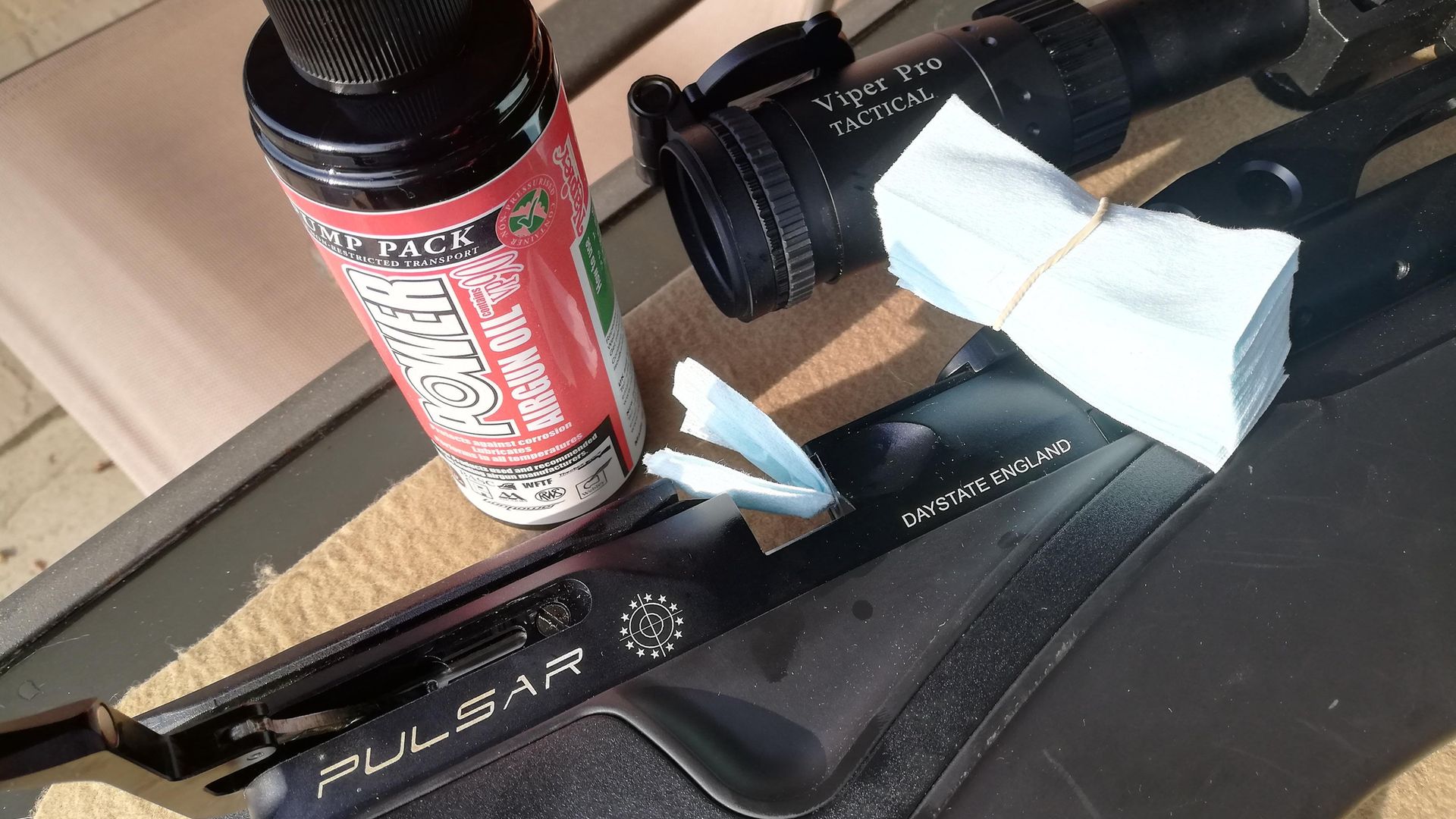 credit: Archant
credit: Archant
Cleaning
To clean the barrel I used the Napier barrel cleaning kit that I’d used previously. On the whole, I’m impressed with it, but I did encounter the same problem that I had before, which was an inability to get the pull-through to go down the barrel from the muzzle end. The instructions do hint that a plastic drinking straw might be useful, but so great were the issues I experienced that I honestly feel that one ought to be included in the kit. I suspect the problem wouldn’t be so pronounced in .22, but with the .177, where the tolerances are much finer, I actually found myself having to slice a drinking straw lengthways in order to create a very tapered cone. With this done, the rest of the cleaning went swimmingly, and the patches that came out weren’t actually that dirty.
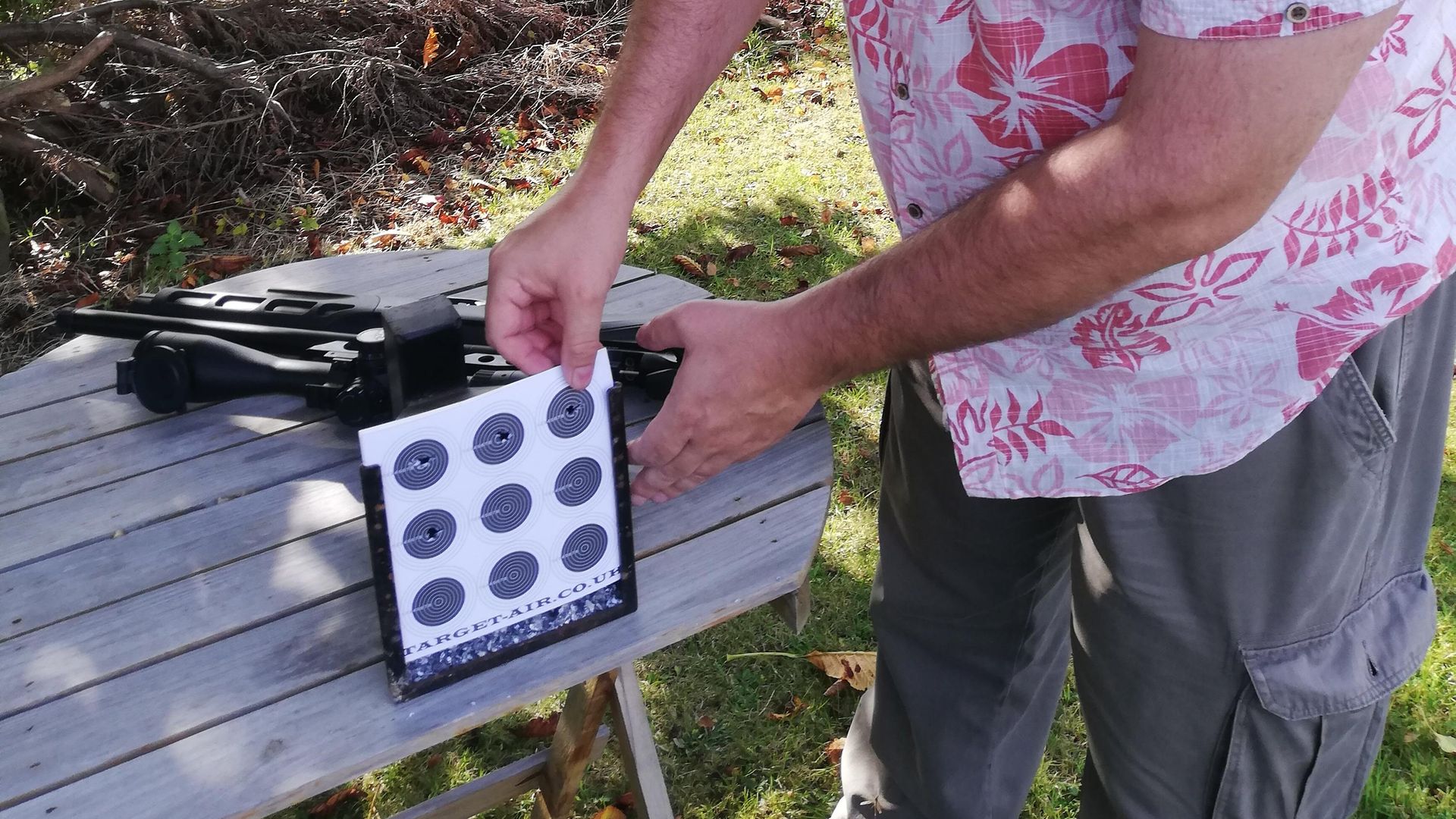 credit: Archant
credit: Archant
Testing
It took me quite a while to determine exactly how I would conduct this month’s tests, but in the end, as hand on heart I had no idea real idea as to what, if any the effects of an increasingly leaded barrel would be, I decided to shoot groups of 10 pellets per target at about 30m and record the group sizes as I went along, and as I mentioned above, refilling after every 90 shots.
I’d like to pause at this point and ask you, the reader, what your thoughts are right now. Will 100 or so shots be enough to have a measurable impact on group size? Will it take more than 100 pellets? And if so, how many more? Will there be a step change at any point? Or would there be a linear degradation in group size, or perhaps, no degradation at all? I’ve been surprised by results in the past, and I’m quite prepared to be surprised again.
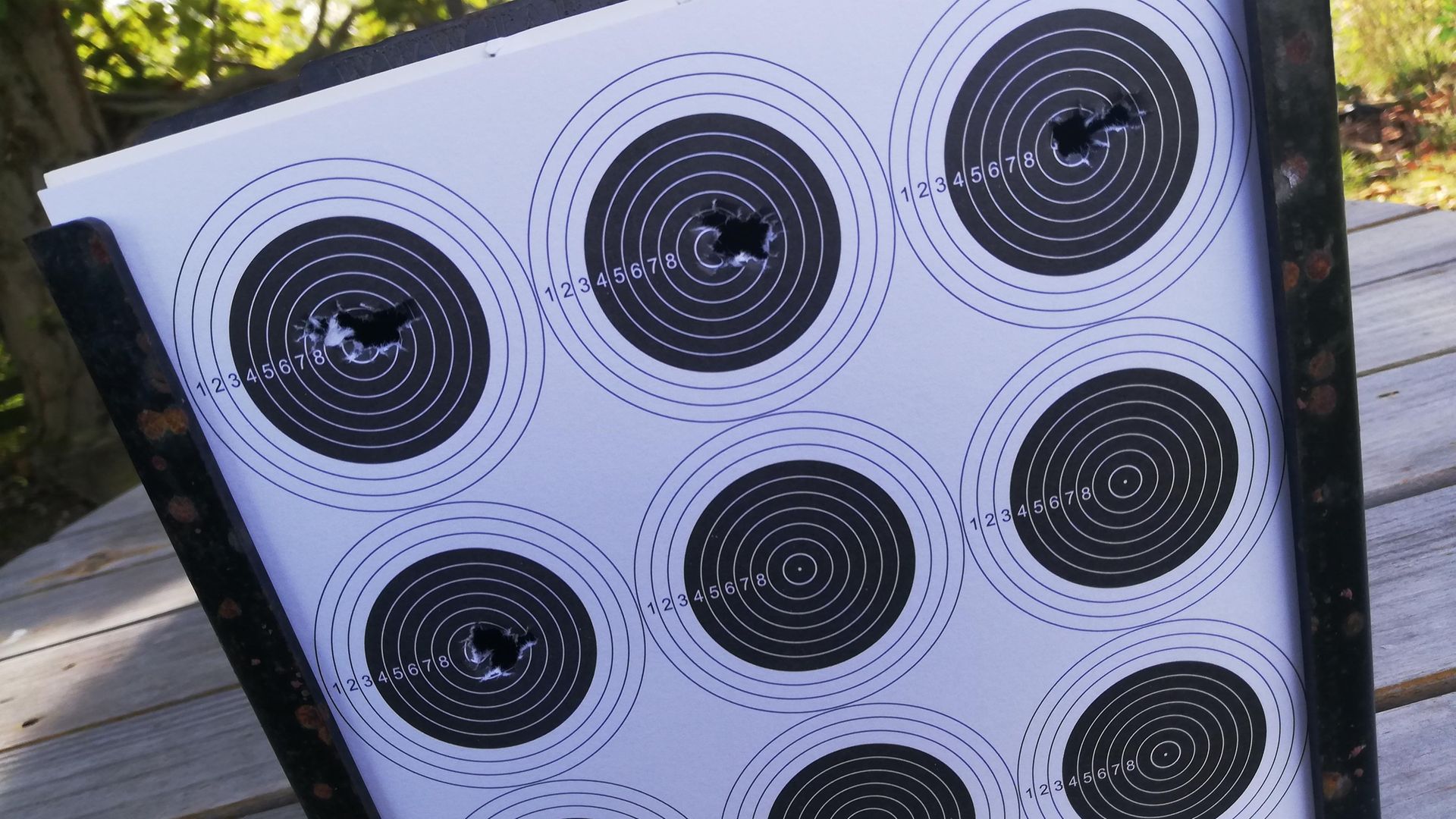 credit: Archant
credit: Archant
Results
I can tell you right now that it takes significantly more than 500 pellets for the dirtying of the barrel to have a substantial impact on the accuracy, and the consistency of shot placement. I got through nearly 3000 pellets, with the result of roughly a 1.5-2mm increase in group size every 800 shots, or so. The degradation was measurable and for the greater part linear, any slight discrepancies being attributed to a small change in wind conditions during the day.
What happened then was something that I really didn’t expect, and I’m still trying to understand...
Somewhere around the 2,500 pellet mark, I started seeing flyers falling way off the main groups. It didn’t happen on every group, and the flyers weren’t consistent in either direction or distance. I began to wonder if it was my own fatigue causing the phenomenon, and so with light fading, decided to call it a day, and head indoors. Returning freshly renewed in the morning, but still unable to fathom the reason for the flyers I began shooting again, only to see the flyers return, and in fact worsen as I approached and topped the 2600 pellet mark. As this now appeared a constant inconsistency I decided that now was the time to pick up the Napier kit and give the barrel the good news.
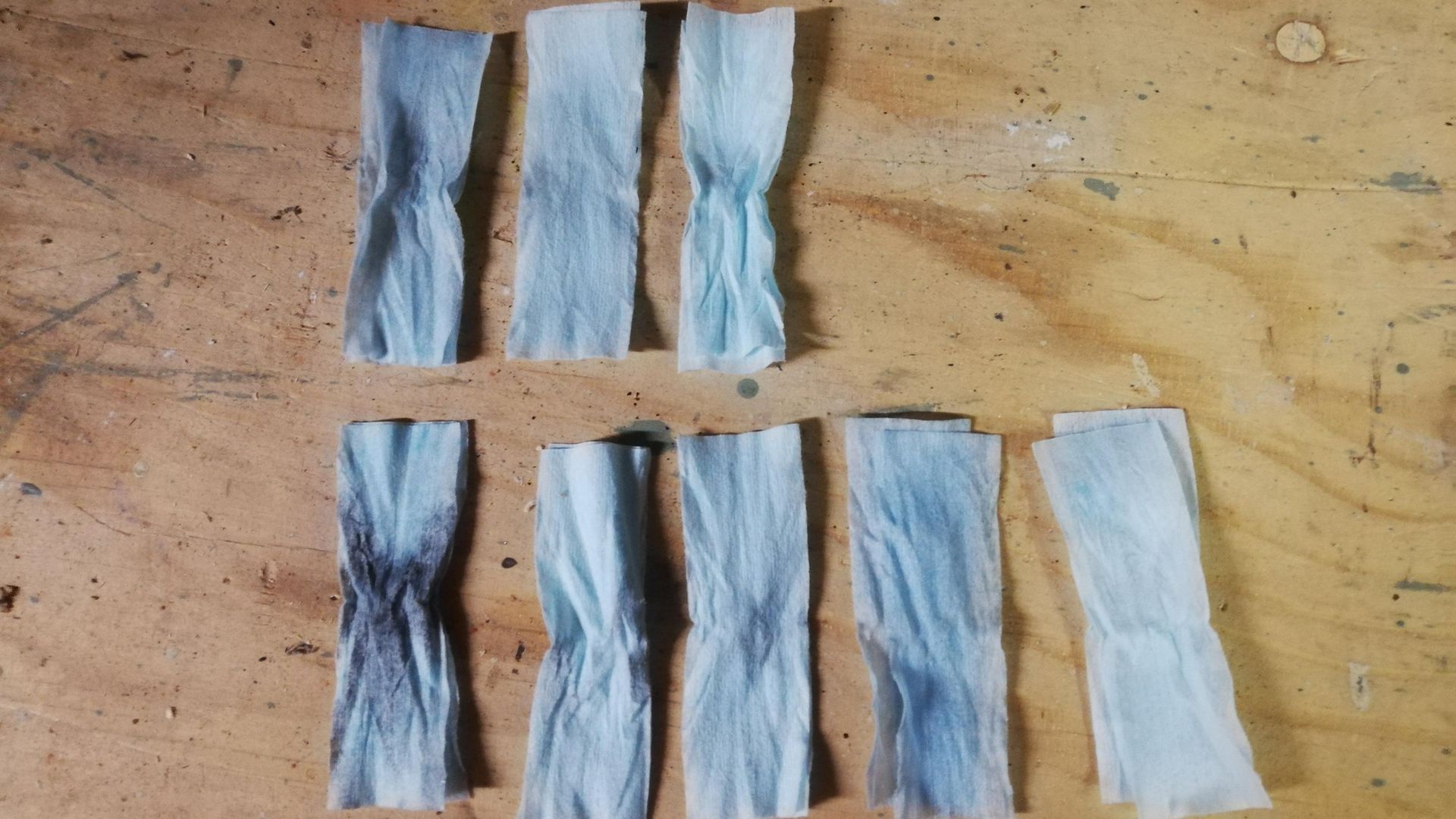 credit: Archant
credit: Archant
My god, was it dirty! As you can see from the attached images, it took quite a few swabs to get it back to sparkling clean and pristine. With my heart in my mouth I began shooting again, and to my relief saw that the flyers had vanished completely, proving to me that they had, in some way, been the result of the increasingly dirty barrel.
At this point, I need to say that I’m not going to claim that these results will occur in every airgun, with every pellet at the same point in testing, but what I can say is that the results I recorded showed small, but nevertheless linear increases in group sizes of about 1.5-2mm for every 800-ish shots. That was until I reached the 2500 pellet mark, when I began to experience the odd flyer.
By the time I got to the 2600 pellet mark, I was observing substantial flyers in every group I shot. I’m at a loss to explain why this happened when it did, why it did, or exactly what mechanism was causing it. Perhaps it was a build-up of lead in a certain part of the barrel, or perhaps at the crown of the muzzle that affected some pellets more than others, or maybe as a result of their initial engagement with the rifling lands, but I don’t think I’ll ever know.
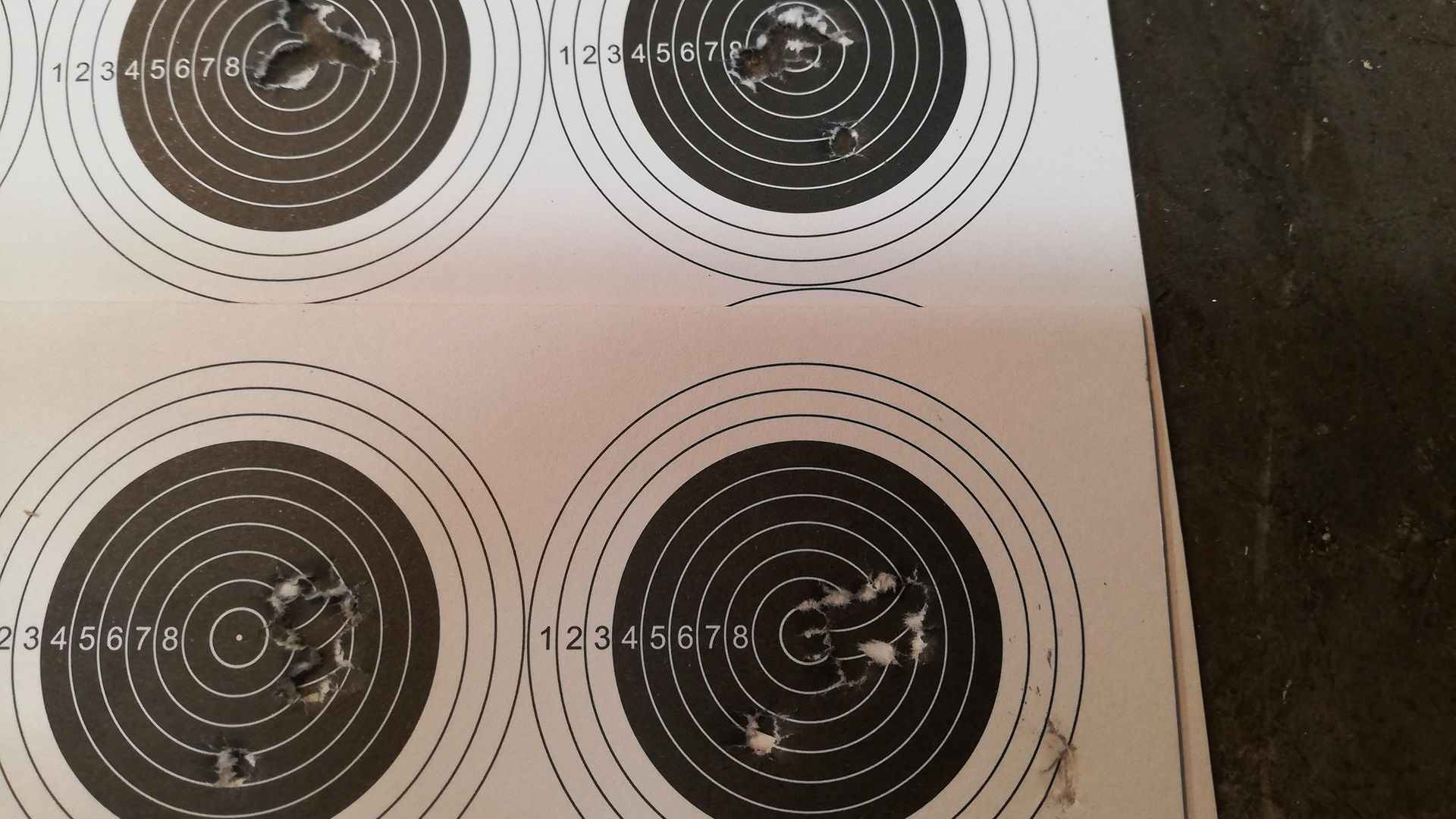 credit: Archant
credit: Archant
Lessons learned
If you’re thinking of doing similar tests yourself, there are a few things you should know in advance. Lessons learned, if you like. Be prepared to fire a lot of pellets, have a lot of the same pellet, and of the same size and batch to hand, and also make sure you’ve got plenty of targets. You should also know that if you’re using a PCP then you’re going to make about 30 trips to the air tank (the Pulsar dropped from 200bar to 154bar every 90 shots), and if shooting at 30m then you’re going to be walking nearly two kilometres to change the targets.
To conclude, it needs reiterating – it can’t be assumed that all airguns, and all barrels will behave in the same way. Some may be worse, some better, but I feel I can say that once you have an understanding of your own airgun, how quickly the barrel leads up, and what effect this has on accuracy and consistency, you can each make your own decisions on whether it matters to you.